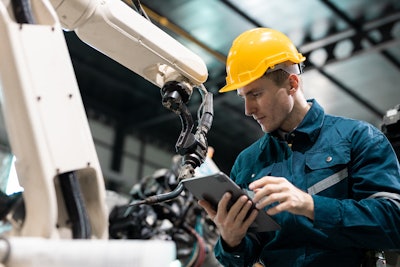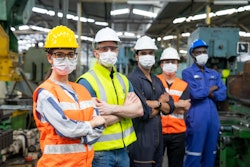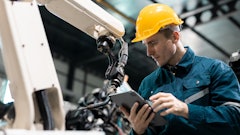
The difference between successful and failed deployments always comes down to the same thing: worker reaction.
When automation works, employees thank you. Their backs don't hurt anymore, their shifts are more engaging, and they can finally focus on solving problems instead of repetitive tasks. When it fails though, workers are frustrated because the technology made their jobs harder, not easier.
This worker feedback reveals something critical that most automation discussions miss: the goal isn't to replace humans with machines, it's to redesign work so both can do what they do best.
The stakes are higher than we think
America has nearly half a million unfilled manufacturing jobs, even as billions flow toward reshoring production. Meanwhile, warehouses and manufacturing facilities continue to see annual turnover up to 50%. Politicians bet on a domestic manufacturing renaissance, but we're approaching the problem with outdated thinking about how industrial work gets organized.
While the industry debates automation deployments, global competitors are fundamentally rethinking how goods get manufactured and transported throughout supply chains. This isn't about inserting one robot and removing one human, it's about redesigning entire systems to compete globally with productivity levels we've never achieved before.
The countries and companies that master this transformation will create advantages so significant that competing on labor costs alone becomes impossible. The question isn't whether automation will reshape manufacturing, it's whether domestic players will lead that transformation or follow it.
What successful automation actually looks like
In industrial operations, workers spend huge portions of their day walking miles, lifting repetitively, or scanning the same items hundreds of times. These aren't the valuable parts of their jobs, they're the barriers preventing workers from doing valuable work and uplevelling their skillset.
Effective automation removes these barriers. When robots handle the heavy lifting and moving - mostly repetitive tasks - workers shift to logistics coordination, process optimization, quality control, continuous improvement, and managing and maintaining the fleet of robots. This shift unlocks something powerful: the skill that's always been there. Workers on industrial floors know their operations better than anyone. They see the bottlenecks, inefficiencies, and potential improvements that management misses. When automation removes the time spent on physical tasks, that same workforce can focus their deep operational knowledge on optimization, troubleshooting, and continuous improvement. You're not just paying $30 an hour for repetitive labor anymore; you're paying for the institutional knowledge and problem-solving capability that only comes from being on the ground every day.
The system design challenge
Most manufacturers approach automation as an all-or-nothing proposition: either fully automate a process or don't bother. This misses the real opportunity.
Effective automation requires redesigning entire workflows around what humans and machines each do best. Instead of asking "Should a robot or human do this job?" the question becomes "How do we organize this process so each component operates at peak effectiveness?"
This starts with involving workers in the design process. Ask them: what's the most physically demanding part of your day? What tasks cause the most errors? What prevents you from adding more value? Then redesign the system to address those pain points while amplifying human capabilities.
One solution is to build a manual line with radically simplified software. This exemplifies that what matters most is not innovative form factor, but architecture. The industry needs software-defined systems built around today's needs, not tomorrow’s hype.
When you approach it this way, workers become advocates for automation because it makes their jobs better. Operations achieve better retention, higher quality, and faster adaptation to changing demands.
The competitive reality
Here's the urgency: international competitors aren't debating these changes, they're implementing them. They're already redesigning supply chains, reimagining production systems, and creating integrated human-machine operations that adapt quickly while maintaining cost competitiveness.
To compete globally, American manufacturers need more than capital investment and tax credits. We need to fundamentally rethink how and why industrial work gets organized. The next generation will only choose manufacturing careers if we create compelling alternatives to the old model of rigid, physically demanding, low-skill work.
This means building flexible systems where workers use judgment and creativity alongside automated efficiency. It means designing operations that can compete on productivity, quality, and adaptability—not just labor costs.
The future consists of industrial productivity solutions that amplify human capability rather than replacing it. When done right, automation transforms industrial facilities into places where workers feel valued, challenged, and committed to staying.
The choice facing American manufacturing is clear. Continue optimizing within old paradigms, or lead the fundamental redesign of how industrial work gets done. If we don't step up to this challenge, others will—and American industrial leadership will follow the same path as industries we've already ceded to global competition.
















![Pros To Know 2026 [color]](https://img.sdcexec.com/mindful/acbm/workspaces/default/uploads/2025/08/prostoknow-2026-color.mduFvhpgMk.png?ar=16%3A9&auto=format%2Ccompress&bg=fff&fill-color=fff&fit=fill&h=135&q=70&w=240)


